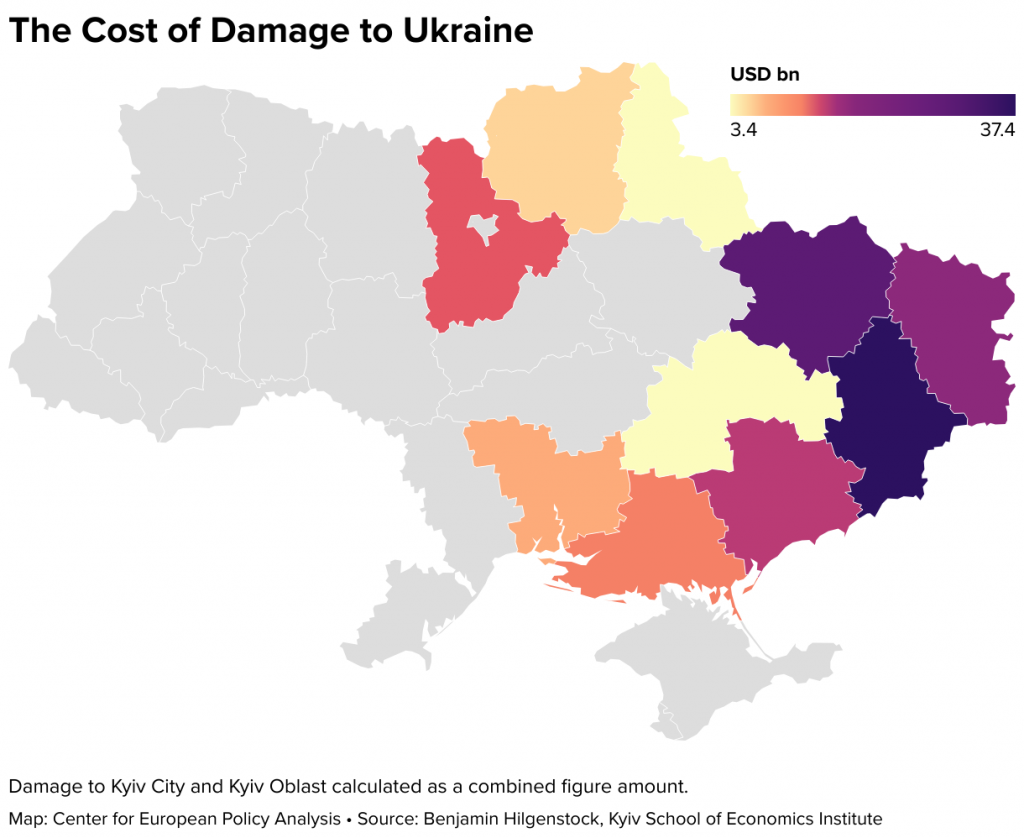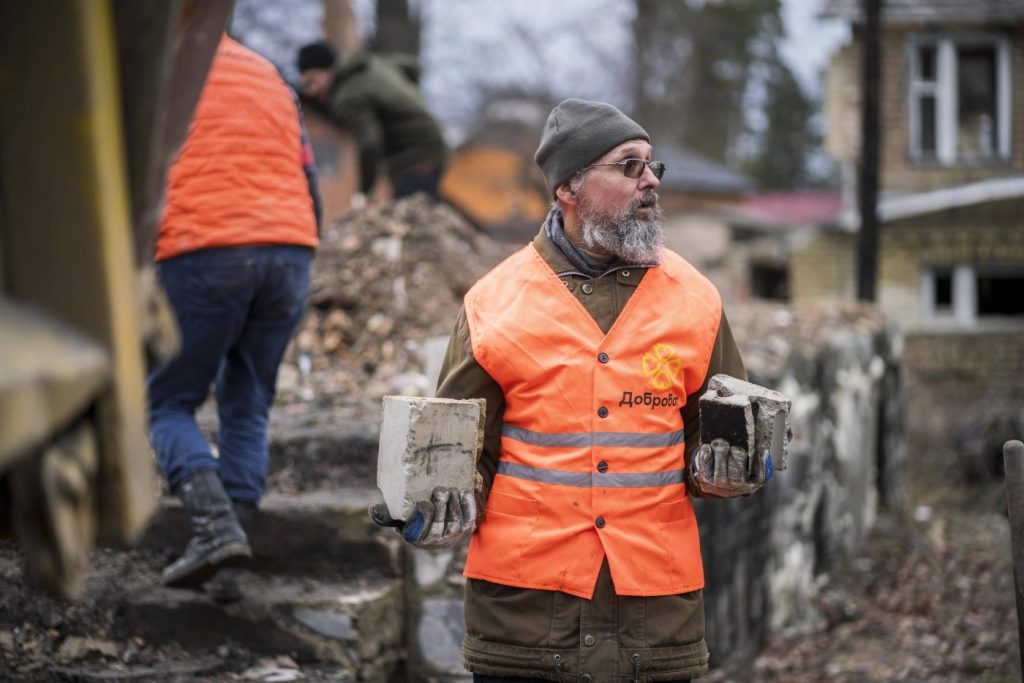Ukraine’s government is rebuilding even as Russian destruction continues. The task is huge and the need for help is urgent.
Rebuilding Ukraine’s homes, hospitals, and infrastructure after the full-scale invasion is a massive task, and despite the ongoing war, Kyiv has held a series of high-level political events dedicated to making it happen.
The Ukraine Recovery Conference in Germany in June aimed to mobilize continued international support for recovery, reconstruction, reform, and modernization. Plans include emergency assistance for immediate needs, implementing rapid recovery projects, and creating attractive conditions to unlock private sector investment.
Civil society has also been encouraged to actively engage in the reconstruction process. Similar conferences, such as the US-Ukraine Reconstruction, Investment, and Innovation Forum held in July, regularly bring experts and government officials together to explore solutions, offer recommendations, and develop a roadmap for post-war reconstruction.
According to the World Economic Forum, the cost of the damage to Ukraine caused by the ongoing war is estimated to be between $411bn and $1tn. American experts have suggested that at least 210,000 buildings have been destroyed by Russian forces since February 2022, including 106 hospitals, 109 religious centers, and 708 schools.

Take Russia’s targeting of the Okhmatdyt Children’s Hospital in Kyiv at the beginning of July. Quite apart from the harm done to desperately sick kids, the destruction of vital buildings and care facilities has left a bill of $9m-$10m simply to replace damaged equipment. And every day the war continues, more destruction is inflicted and the bill rises.
Among the most vital reconstruction needs, housing represents 17% of the estimated costs, followed by transport, commerce and industry, and agriculture and energy, according to the Rapid Damage and Needs Assessment.
The extent of housing destroyed due to Russian attacks is difficult to assess accurately. In 2022 alone, losses were estimated to be between 135,000 and 817,000 buildings destroyed or damaged, with the wide variation caused by the limited opportunities to examine buildings in the midst of military activity.
What is certain is that the destruction of housing has forced many Ukrainians to leave their homes. As of February, there were 3.7 million internally displaced people (IDPs) in Ukraine. A significant portion of these people’s homes have been damaged, making it difficult for them to return.
In response, Kyiv has implemented a range of initiatives to assist those whose homes have been damaged by the war. One example is compensation or a voucher for the repair of damaged housing, provided by the International Organization for Migration (IOM) with support from the European Union.
Residents of frontline regions such as Kharkiv, Sumy, Dnipropetrovsk, Mykolaiv, Odesa, and Zaporizhzhia can join the program by recording the damage to their homes with local authorities. Running until August, it is intended to help people quickly repair war-damaged homes.
Another initiative is the housing rental subsidy for IDPs. The size of the subsidy takes into account the cost of rent in different regions or localities, the number of people in the household, their income, and their ability to pay rent independently. The lower the income, the higher the percentage of rent covered.
At the end of December last year, Ukraine launched a program allowing citizens to use a housing certificate to purchase a new home in exchange for a destroyed one. The compensation program has two stages: first, obtaining a certificate for the purchase of a new home, and second, cash payments for independent construction, including financing the purchase of such premises/houses that will be built in the future. The program is popular and facing challenges in dealing with the massive demand.
While some programs are having difficulties or are just beginning to operate, people need housing now. It is vital to implement a project to build affordable housing, including rapidly erected prefabricated buildings, for refugees who have been forced to leave their homes in search of safety within Ukraine.
This could provide homes in safe locations, retraining centers, and rehabilitation facilities, especially for military personnel transitioning to civilian life. Centers providing services for children could also be established.
By providing safe housing, such a project would not only meet immediate needs but also help displaced individuals regain a sense of normalcy and security as the vital work of rebuilding continues.
